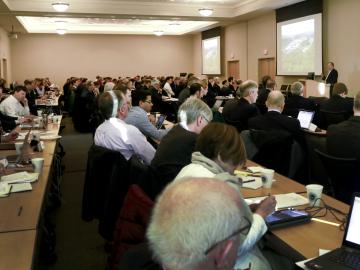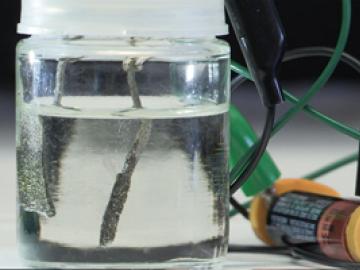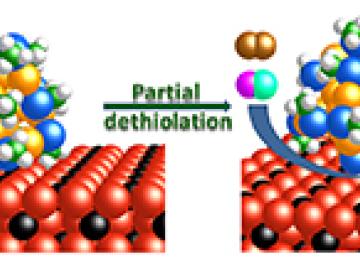
Filter News
Area of Research
- (-) Chemistry and Physics at Interfaces (7)
- (-) Nuclear Science and Technology (35)
- Advanced Manufacturing (7)
- Biological Systems (3)
- Biology and Environment (119)
- Biology and Soft Matter (4)
- Building Technologies (3)
- Chemical and Engineering Materials (3)
- Clean Energy (208)
- Climate and Environmental Systems (7)
- Computational Biology (1)
- Computational Chemistry (5)
- Computational Engineering (2)
- Computer Science (4)
- Data (1)
- Earth Sciences (1)
- Electricity and Smart Grid (2)
- Energy Frontier Research Centers (7)
- Energy Sciences (2)
- Fuel Cycle Science and Technology (2)
- Functional Materials for Energy (10)
- Fusion and Fission (43)
- Fusion Energy (7)
- Geographic Information Science and Technology (1)
- Isotopes (24)
- Materials (186)
- Materials Characterization (2)
- Materials for Computing (17)
- Materials Synthesis from Atoms to Systems (8)
- Materials Under Extremes (8)
- National Security (53)
- Neutron Data Analysis and Visualization (2)
- Neutron Science (83)
- Quantum Condensed Matter (3)
- Quantum information Science (5)
- Renewable Energy (2)
- Sensors and Controls (2)
- Supercomputing (172)
- Transportation Systems (6)
News Type
News Topics
- 3-D Printing/Advanced Manufacturing (2)
- Advanced Reactors (5)
- Computer Science (1)
- Coronavirus (1)
- Cybersecurity (1)
- Environment (1)
- Fusion (7)
- Isotopes (2)
- Materials Science (2)
- Molten Salt (1)
- Neutron Science (2)
- Nuclear Energy (19)
- Physics (1)
- Space Exploration (1)
- Transformational Challenge Reactor (2)
Media Contacts

Moving advanced nuclear reactors from the drawing board to the field was the focus of the Advanced Reactors Technical Summit III, hosted by the Department of Energy’s Oak Ridge National Laboratory and attended by 180 experts from industry, government and academia. The conference, ...

When it’s up and running, the ITER fusion reactor will be very big and very hot, with more than 800 cubic meters of hydrogen plasma reaching 170 million degrees centigrade. The systems that fuel and control it, on the other hand, will be small and very cold. Pellets of frozen gas will be shot int...

From the bluebird painting propped against her office wall and the deer she mentions seeing outside her office window, Linda Lewis might be mistaken for a wildlife biologist at first glance. But rather than trailing animal tracks, Lewis, a researcher at the Department of Energy’s Oak Ridge National Laboratory, is more interested in marks left behind by humans.

With more than 30 patents, James Klett is no stranger to success, but perhaps the Oak Ridge National Laboratory researcher’s most noteworthy achievement didn’t start out so hot – or so it seemed at the time.

Andrew Stack, a geochemist at the Department of Energy’s Oak Ridge National Laboratory, advances understanding of the dynamics of minerals underground.







